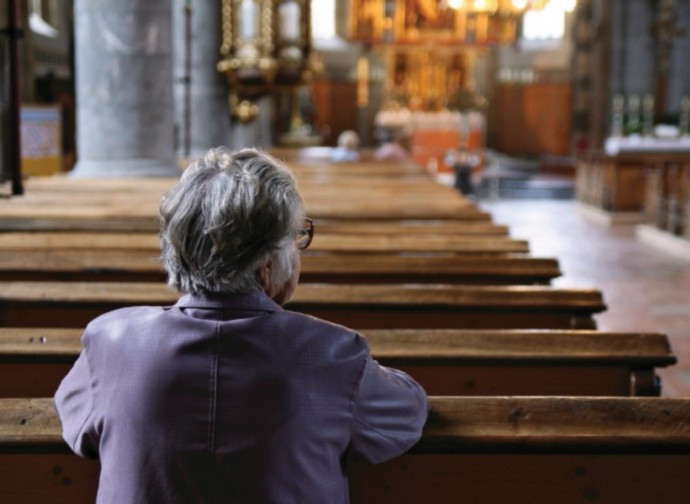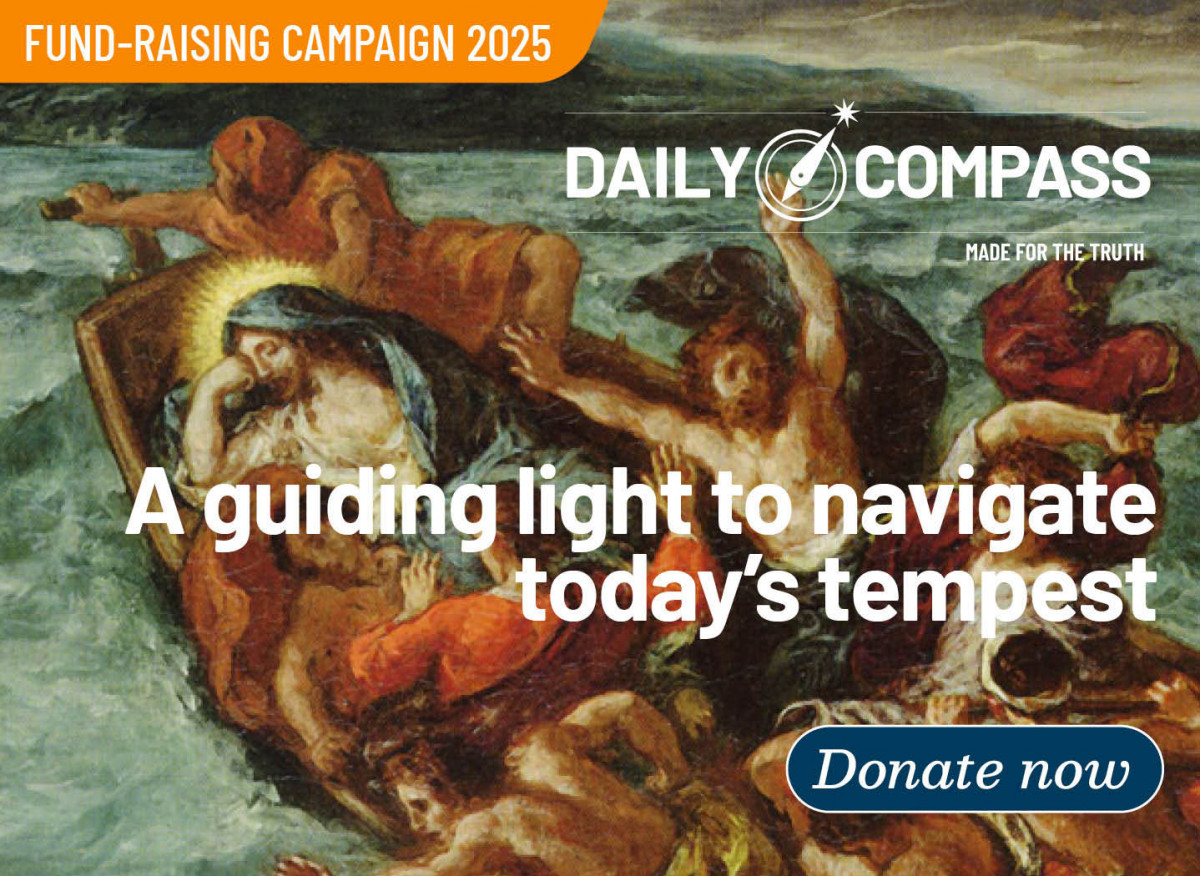The great escape, Catholics flee the only true church
There is a dramatic crisis of faith, regretfully also fuelled by the leadership of the Church, which is driving many of the faithful to give in to the temptation of following other paths, from Orthodoxy to sedevacantism to the Lefebvrian communities. But there is nothing Catholic about these positions, this is why.

The lamp has been placed under a bushel and everywhere is darkness. And in the darkness there is confusion, disorientation, fear. It is therefore understandable, in this situation, that once one sees a burning flame, they move towards it to enjoy a little of its light and warmth.
The terrible crisis of faith that we are experiencing at the moment is indeed a great trial, all the more so since it appears to be fuelled by that very centre of unity, which finds its raison d'être in strengthening the brethren (cf. Lk 22:32) and not in following every "wind of doctrine" (Eph 4:14). It’s a crisis that shifts Catholics to approve any act, word, and writing of the Pontiff, insofar as it comes from the Pope, or to reconsider the Petrine ministry in a manner that is not Catholic.
On the first front, one forgets that the pope is not the Church, but the centre of unity of the Church. That the pope is not an absolute monarch, almost as if he could act legitimately even if he’s destroying the Church. That the pope is not the source of truth, but the first to have to obey revealed truth. That the ultimate reference is not his own will, but the will of God, towards which pope, bishops, priests, and the faithful are turned. And this is why the theological tradition provides for the case in which one can and must resist unjust orders from the pope, his teachings or provisions that are objectively contrary to the good of the Church and the truth.
On the second front, there is a wide range of situations in play, differing from one another: the transition to Orthodox autocephaly, the various positions that consider the See vacant, formations that officially recognise the legitimate pontiff, but which consider themselves the final instance of doctrinal decisions, and which have given rise to a de facto autocephalous hierarchy, born of ordinations without a papal mandate and which in fact maintains canonical independence from the Roman See. There is much confusion and it sees Catholics, even among priests, turning from one to another to find the sense of faith again.
The Catholic position intends the Petrine succession within the apostolic succession, but with a uniqueness: that of the succession of the head of the apostolic college. In the Gospels it is clear that Peter is not simply one of the Twelve; within the apostolic college he is the head, by the will of Christ, and is the rock upon which the Church is built. This is generally recognised by the Orthodox, while they lack the fact of the Petrine succession; they can accept that Peter alone was granted this primacy, while they reject the linear succession of Peter's successors, accepting only the succession from apostolic college to episcopal college. The centre of unity of the Church would therefore not be found in the successors of Peter, but in Christ Himself and in the Holy Spirit.
This is not to deny this last assertion, but to reflect on the necessary 'visibility' and 'incarnation' of the four notae of the Church, which we profess in the Creed, and which are its indefectible properties. The Church is visibly apostolic in the episcopal college; in the successors of the apostles her apostolicity takes flesh. She is visibly catholic (kath'olon, i.e. according to the totality) in her universality and in the fullness of truth and the means of grace; her presence in every corner of the earth, her Magisterium and the sacraments embody her catholicity.
She is visibly holy because, sanctified by Christ, she becomes sanctifying: that is, she possesses visible means of sanctification and visible fruits of sanctification; hence the meaning of canonisations, which manifest the incarnation of holiness. Where is the Church visibly one? Where is this unity embodied? In the unity of the primacy of Peter, who has the task of "presiding over this universal communion; of keeping it present in the world as an even visible, incarnate unity" (Benedict XVI, Homily, 29 June 2006). Without the Petrine succession, the note of the one would not find its visible and tangible expression. Without Petrine succession, Peter would have passed on nothing of ‘his own’ and that stone on which the Church is founded would remain a historical relic.
The episcopal college is in turn identifiable precisely because of its communion with the successor of Peter, and cannot exist, as a college, without him.
The sacramental character of the episcopal order in turn refers to hierarchical communion. If, therefore, a bishop refuses the primacy, he subverts the meaning of the sacrament conferred on him. And it is for this reason that, for an episcopal ordination, it is necessary (not ad validitatem, but ad liceitatem) that there be a papal mandate, or that this be, in situations of grave need for the Church, at least presumed.
Furthermore, the successor of Peter, being the "perpetual and visible principle and foundation of the unity both of the bishops and of the multitude of the faithful" (LG, 23), is in a close relationship with the sacrament of unity, namely the Eucharist. Therefore, communion with the pope "is an intrinsic requirement of the celebration of the Eucharistic Sacrifice" (Ecclesia de Eucharistia, 39).
It is Christ who wanted his Church to be one, and he wanted this unity to be clearly visible and tangible, to have a certain and identifiable reference. And we are bound to this express will of the Lord. There is no reason in the world that would authorise us to contradict this will of His.
For this reason, in the structure of the Church, apart from the flexibility of certain organisational forms, the concrete expression of this unity can never be lacking. Nor can this concrete reference to unity in its 'parts' be missing: dioceses, communities, monasteries, institutes.
The autocephaly of the Orthodox world is one such form that contradicts the will of Christ. One does not want to deny the innumerable elements of truth, goodness, and beauty, but neither can one remain silent that the lack of recognition of the Petrine primacy is a serious problem, the cause of the innumerable problems of unity in it. The Orthodox theologian Alexander Schmemann pointed out, for example, that from the canonical point of view, the affirmed principle of the full catholicity of each local church, united around its bishop, is not in fact applied, since the bishop's power of jurisdiction is received from the primate (similarly to how, in the Catholic Church, the bishop receives it from the pope). This problem is at the origin of the various schisms and tensions surrounding the issue of the Diaspora.
Then there is the whole issue of sedevacantism, which theorises the Sede vacante due to heresy since John XXIII (for others since Paul VI), or, in its most recent version, which does not recognise Francis as pope. The justifications for these positions are clearly diverse, but the effect is that the universal Church has been without its centre of unity for a minimum time of almost ten years (for those who consider 'only' Francis an anti-pope) to a maximum of over sixty. During this time, in the absence of the pope, nothing of value can be done for the universal Church, which remains, to some extent, suspended.
The history of the Church has known a maximum time of sede vacante of 1006 days, i.e. the time between the death of Blessed Clement IV and the election of Blessed Gregory X. It took almost three years to elect a new pope, because the cardinals, gathered in conclave in Viterbo, in the Palace of the Popes, could not agree. It was a unique rather than rare situation, which led the people of Viterbo to reduce their food and uncover the roof of the hall, to try to speed up the election. In any case, it was a short time, motivated by the time of an election. Similar situations occurred with the Sede vacante for just over two years, which led to the election of John XXII and then Celestine V. Another case concerns the election of Martin V, who put an end to the Western Schism, after two years of antipopes.
The problem with sedevacantism lies in the fact that, basically, one no longer knows how to end the situation of the Sede vacante: some people elect a pope by gathering a few faithful, some people wait for a 'Catholic' one (and it is not clear who decides on the doctrinal integrity of the newly elected). Meanwhile, the Church as universal remains inert, essentially emptying of meaning the Lord's promise that the gates of hell would not prevail.
Then there remains the position of those who formally recognise the reigning pontiff, mention him in the Canon of the Mass and, while not finding themselves in a situation of autocephaly, since the bishops do not claim any jurisdiction, are nevertheless in that of a substantial self-referentiality. This is the case of the St Pius X Priestly Fraternity (FSSPX) and the so-called 'Resistance', founded by Bishop Richard Williamson, one of the four bishops consecrated by Lefebvre in 1988. The problem with this position does not lie in the criticisms raised against certain documents of Vatican II or the liturgical reform, criticisms that were considered legitimate by the Holy See itself at the time of the bilateral talks with the FSSPX, but in the fact that 'out of prudence' the entire Magisterium of the Church, from Vatican II inclusive to Pope Francis, is believed to have no real magisterial authority. Hence the rejection of encyclicals, of the Catechism of the Catholic Church, of the new Code of Canon Law, of the 'new' canonised saints, as well as the prohibition to actively participate in the 'new Mass' and, for every priest, to use consecrated particles in the 'new Mass'. Moreover, the categorical refusal to accept the invitation to place oneself within the horizon of the 'hermeneutics of continuity' and the 'reform of the reform'. And that self-referentiality whereby the ultimate instance for defining heresy or orthodoxy is not the Holy See.



